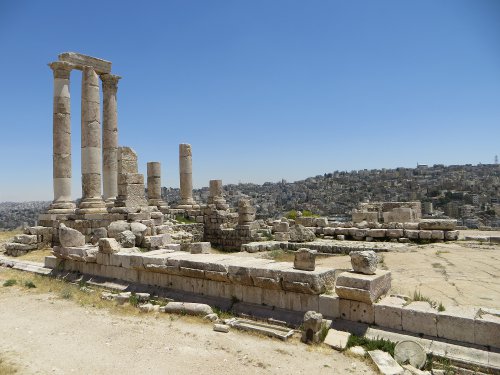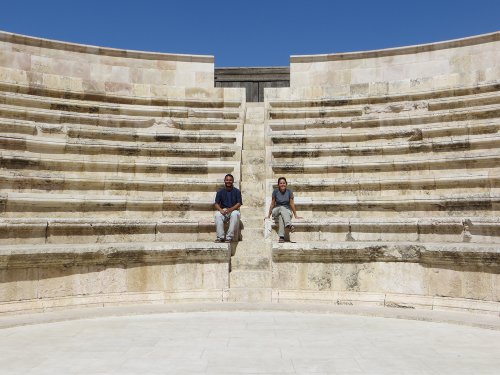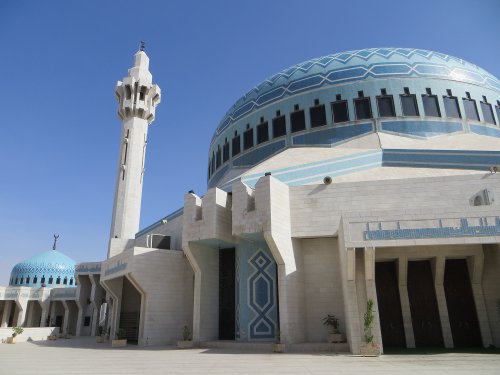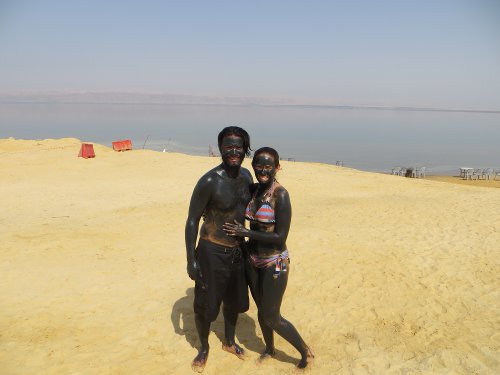Sights and Activities
Below are the places we saw and activities completed while visiting Jordan:
Aqaba
Ayla and Ancient Church Ruins: the site of the ancient port of Aqaba. There are not many ruins left, but information boards give you an idea of what it was like in its peak days.
Sherif al-Hussein Bin Ali Mosque: the main city mosque that can be viewed throughout the city center.

Aqaba Museum: previously the home of the great-great-grandfather of the present king, Abdullah II. The collection of artefacts includes coins, ceramics, and Islamic stone tablets.
Aqaba Fort: the castle was built between 1510 and 1517 and was used as a khan (travelers’ inn) for pilgrims on their way to Mecca.
Wadi Musa
Petra: the Nabataeans, a nomadic tribe from western Arabia, settled in the area of Petra around the 6th century BC. They were organized traders and over the next 500 years they used their wealth to build the city of Petra. Earthquakes in 363 and 551 ruined much of the city and Petra became forgotten, a ‘lost city’ known only to local Bedouin who kept it a secret. In 1812, a Swiss explorer, Jean Louis Burckhardt, ended Petra’s isolation. There are over 800 registered sites in Petra, including some 500 tombs. We spent a day-and-a-half exploring the magical canyons and splendid man-made carvings. The entrance to the complex starts by walking down a path passing by Djinn Blocks, Obelisk Tomb, and then entering the the Siq (Canyon). The Siq is narrow with vertical walls and one of the highlights of our visit to Petra. The walk through this mystical corridor transports you into a new world full beautiful colors and cliffs. Technically, the Siq is not a canyon, a gorge carved out by water, but a single block that has been spread apart by tectonic forces. As you exit the Siq, you go from a natural wonder into making sight at a man-made wonder, the Treasury. In sunlight, the Treasury is amazingly photogenic. We were fortunate to view it from above the Siq after hiking to a great lookout. After the Treasury the path continues passing by the Street of Facades, Theater Roman, Royal Tombs that the stone turns pink at sunset, Colonnaded Street, Great Temple, and Qasr al-Bint. After visiting the ancient city of Petra, we went on a couple more treks, the first up to the High Place of Sacrifice located on the mountain top of Jebel Madbah where the views of all of Petra are spectacular. The last hike was to the Monastery, which was our favorite monument. The spectacular Monastery is similar in design to the Treasury but bigger. The name derives its name from the crosses carved on the inside walls, suggesting that the building was used as a church in Byzantine times.

Walking from The Siq to The Treasury
Amman
Citadel: on the highest hill in Amman, Jebel al-Qala’a, there have been artifacts that were discovered that show that the hill was a fortress for thousands of years. Now the site is full of ruins of the Temple of Hercules and Umayyad Palace. The views of the city throughout the complex are stunning.
Roman Theater: the theatre is believed to be built in the 2nd century AD and has a seating capacity of 6000.
Forum: the row of columns immediately in front of the Roman Theatre is all that is left of the forum. It was once one of the largest public squares in Imperial Rome.
Odeon: this 500-seat amphitheater was built in the 2nd century AD and served mainly as a venue for musical performances.


Nymphaeum: this elaborate public fountain was once a large, two-story complex. Now it is in ruins with not much to see, but a few columns and an archway.
Cave of Seven Sleepers: the legend of the ‘seven sleepers’ involves seven Christian boys who were persecuted by the Roman Emperor Trajan, then escaped to a cave and slept there for 309 years. This is one of several locations that claim to be that cave. Inside the cave are eight tombs that are sealed.
King Abdullah Mosque: completed in 1989 as a memorial by the late King Hussein to his grandfather, the mosque features a magnificent blue dome.

Dead Sea: this body of water is located 400 m (1,312 ft) below sea level, the lowest point on Earth. The extreme salinity of the water is because of the high evaporation rate. We spent half a day in Amman Beach enjoying the salty waters as we float. The buoyancy experienced makes it difficult to swim or even stand up. The water leaves our skin polished as if we applied oil to ourselves. Rocks of salt are very apparent throughout and turn into powder when you squeeze them. Sal could not help to taste the salt, which he described tasting stronger than table salt. We were also able to apply mud to ourselves that was collected deep from the sea. We left the beach feeling relaxed and ready for a nap!

